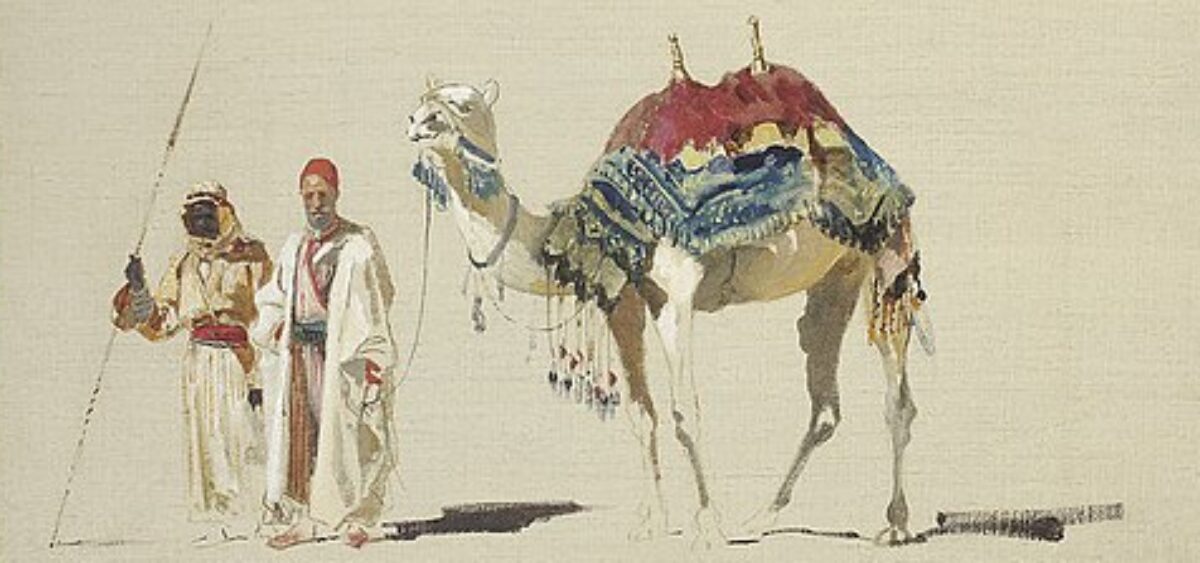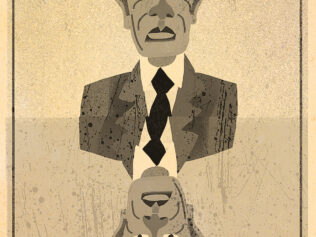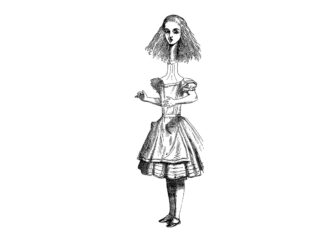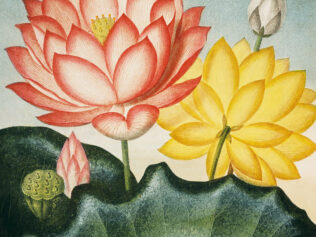
The word “serendipity” means “lucky coincidence.” Perhaps it is the key to understanding the mysterious forces directing human fate.
In the mid-18th century, British writer Horace Walpole invented a new word in a letter to a relative. Actually, he borrowed it from a Persian fairy tale. The author of The Castle of Otranto was likely unaware that he might have described one of the most important elements of the complexity of human fate—serendipity.
Walpole’s discovery was hardly a revelation. It was rather an observation of a man who enjoyed playing with words and appreciated his own inventiveness. It is unlikely that anyone besides Horace Mann—the American politician and distant relative to whom Walpole wrote at the time—would notice this moment. It all happened in quite ordinary circumstances: sitting at home, writing a letter. Instead of shouting “Eureka!”, Walpole wrote to Mann: “I have nothing better to tell you […].” Most importantly, however, the matter concerned the word serendipity. It wouldn’t cure disease or solve hunger, but Walpole did something that all great explorers do—he opened up a whole new space and illuminated it, so that people could enter and see for themselves. A few centuries later, the idea of serendipity would become a field of inquiry for academics wishing to explain the mysterious forces directing human fate, as well as a modern tool for conducting large-scale research, also beyond the fields of psychology and sociology. Therefore it can be safely said that serendipity was invented on January, 28 1754.
The Most Difficult Word in the World
In 2004, an English translation company ranked “serendipity” among the ten most difficult words to translate. It’s one of those terms for which there is no good synonym in other languages. Therefore “serendipity” in Polish, French, German, Spanish, Albanian, and Basque closely resembles the English spelling. Even the Hungarian serénység sounds familiar, which rarely happens in this language. “Szczęśliwy traf,” the shortest Polish definition of serendipity, literally means “happy chance.” But this doesn’t really reflect the essence of serendipity—it is just the first half of the definition included by Walpole in his letter.
“I once read a silly fairy tale, called The Three Princes of Serendib: as their Highnesses travelled, they were always making discoveries, by accidents and sagacity, of things which they were not in quest of: for instance, they discovered that a mule blind of the right eye had travelled the same road lately, because the grass was eaten only on the left side, where it was worse than on the right—now do you understand serendipity?” he wrote.
These two sentences contain the whole definition of serendipity—a definition that has survived to this day. However, the details are important. Making a discovery by accident is another way of experiencing “happy chance.” But what is meant by the princes’ “sagacity” is the essence of the problem.
The Riddle of the Lame Camel
According to the fairy tale, one day King Giaffer, the ruler of the ancient land of Serendib (the Arabic name for Sri Lanka) decided to send his three adult sons on a journey around the world. He had long worried that the princes, accustomed to a carefree and prosperous life, were not properly prepared to rule the kingdom in the future. They were thoroughly educated, but their father believed that knowledge alone was not enough—it had to be confronted with the world beyond “the safe home,” or in this case a beautiful and fertile island. So, the princes left Serendib.
One of their adventures was of particular interest to Walpole. During the journey, the brothers meet a merchant whose camel is missing. They ask whether it is blind in one eye, lame, and missing a tooth. They also want to know if the lost animal carries barrels—on one side with honey, on the other with butter. It turns out that their description is accurate, and the merchant assumes the brothers are responsible for the theft. So he takes them to the emperor to demand justice and punishment. But when the ruler asks how they were able to describe the stolen animal in such detail, the brothers explain that it was because of the clues they’d noticed. The grass was eaten on the side of the road where it was less green, so they concluded that the camel chose unattractive feed because it could not see in one eye. Since there were lumps of chewed grass on the road that were the size of a camel’s tooth, they inferred they had fallen through the gap left by a missing tooth. The tracks showed the prints of only three feet, the fourth dragged, indicating that the animal was lame. That butter was carried on one side of the camel and honey on the other was evident because ants were attracted to melted butter on one side of the road and flies to spilled honey on the other. All ended well—the camel was found, and the emperor showered the princes with gifts and appointed them as his special advisers.
The princes’ attitude, which so surprised the emperor and the merchant, directly inspired Walpole. That perfect mixture of intelligence, knowledge, a sense of observation, and understanding is what he calls “sagacity” in the letter. From that moment on, the British writer will associate all those who experience “happy coincidences” with the mysterious land of Serendib.
Fate Favors the Prepared
At least two things in this fairy tale are important, and perhaps a breakthrough for the discovery of serendipity. First, the princes gained their intelligence and astonishing ability to observe the world at home—i.e., thanks to the kingdom in which they lived and the education provided by their father. It is also worth mentioning that the name of the island Serendib comes from the Sanskrit word Simhaladvipa, which means “Dwelling-Place-of-Lions Island.” The lion-like inhabitants of such an island have nothing to fear. They can safely set off into the unknown.
So the princes go forth armed with the knowledge and skills that are so important in today’s thinking about “lucky chances.” Previous failures are also significant. Collecting the widest possible range of data allows one to look more closely and find things by combining different elements, often originating from completely different areas. The three princes are simply walking and watching. Ants—honey, butter—flies, grass—animal teeth. However, they see things differently than those they meet on their way—unlike them, they know what they are looking at. They see the world in the broadest possible terms, as a great network of connections.
The Roman philosopher Seneca the Younger believed that “luck is what happens when preparation meets opportunity.” Louis Pasteur, the 19th-century chemist to whom the world owes the accidental discovery of the rabies vaccine—often considered the best example of serendipity in science—said: “Chance favors only the prepared mind.” Serendipity would therefore be a kind of “smart luck.” Christian Busch, one of the greatest contemporary researchers of this concept, also thinks about serendipity in this way.
Busch is a scholar, but for him serendipity is not only the key to innovative thinking in science or a new kind of creativity, but also an opportunity for greater control over his own life. In The Serendipity Mindset: The Art and Science of Creating Good Luck Busch tells his own tale of serendipity. He describes an incident from his distant past—one sunny day, this young man on the cusp of adulthood almost died in an accident with a friend. Following the event, he began to think about its circumstances and possible causes. He was a privileged young man whose fast and careless driving through the streets of Heidelberg nearly led to his and his friend’s death.
From that moment on, Busch began to see things differently. Or rather, walk and look at things differently. Because, as both the German researcher and Walpole point out in their interpretations of the old Persian fairy tale, the second basic element of serendipity is activity—walking with knowledge. This is what can help one change their life.
Sneeze, Spill, or Drop
Even the greatest knowledge acquired at home or at university, or inherited intelligence, cannot be left to sit in one place—contained on an island or in a laboratory. The father of the three princes of Serendib was well aware of this. In his book, Busch writes: “The more active I became, the more I started seeing the patterns in my and other people’s lives, and later in my research as well.”
Research suggests that between thirty and fifty percent of inventions are the result of coincidence. Scientists see this as a kind of combination of chance and effort. Busch claims that serendipity is the world’s “hidden force.” In order to explain how it operates, he points to three important stages. First, someone encounters something unexpected that goes beyond the ordinary. Thanks to this, the so-called serendipity trigger is activated. Busch compares this to pressing a camera shutter button or the trigger of a gun. Finally, the person associates this “trigger” with something that happened earlier. They connect the dots and begin to understand the potential value of the unexpected. Busch calls the juxtaposition of two previously unrelated events bisociation. The result of bisociation might be a new insight or innovation, completely different from the previous way of solving a given problem.
Neither photography nor penicillin would have been discovered were it not for such “lucky” coincidences. “Daguerre’s wife broke jars with chemicals in the closet where he had placed a silver-covered copper plate for the night. The next day he discovered that under the influence of the fumes of spilled mercury, the image was significantly improved,” writes Wacław Żdżarski about the accidental invention of the daguerreotype in his book about 19th-century photography.
An unexpected but happy discovery also occurred in 1922, when Alexander Fleming accidentally sneezed into a Petri dish full of bacteria. Distracted, he put the dish on his cluttered desk. A few days later, he noticed that the bacteria in the Petri dish had been destroyed. Curious, he began work on isolating lysozyme, an antibacterial protein found, among others, in tears and mucus. Convinced that stronger remedies might exist, Fleming began searching for other natural antibacterial agents. In 1928 he discovered penicillin and in 1945 he received the Nobel Prize.
Happy Coincidences
The way serendipity works is best thought of like gravity or love. Suddenly, they reveal the mysterious weight carried by even the smallest of things. One sees how a tiny element attracts others and a completely new pattern emerges. It can be the unexpected joy felt when meeting someone new, medicine discovered in something assumed to be poisonous, or a technology invented by accident. All one has to do is help the process. Perhaps the human mind—which is what almost all contemporary serendipity researchers write about—works in a similar way. It collects—just like a magnet attracts iron filings—various images and things, all different life experiences. But in order to do it well, it first needs to be “magnetized” and gain the power of attraction. For that, one needs knowledge and experience, which consists of both successes and failures.
For the princes of Serendib, the world is a field, and all events are dots. In “lucky coincidences” it is possible to combine them—even in the most rigorous, sterile worlds. One substance overflows into another, and the extra cells merge in Petri dishes. “[The princes’] curiosity allowed them to recognize different cues, such as the camel’s tracks, which with hindsight allowed them to connect the dots,” writes Busch.
Today, we call it a serendipitous way of thinking. Sometimes it is enough to move a table to change the atmosphere during a meeting or to get better results when working in a group. Unexpected change can result from accidentally spilling coffee on someone or from a random encounter on the street.
Walpole was an interesting figure. Contemporary writers present him as a quirky inventor and popularizer of new words. Two hundred, including malaria, beefy, and nuance, were subsequently included in the Oxford Dictionary. By the time he invented—for himself and for the world—the “happy coincidence,” he was already, in a sense, serendipitous.
There’s perhaps some kind of naivety among the three fairy-tale princes sent out into the world. It could be open-heartedness or an unprejudiced world-view, but maybe simply facing the world with a beating heart is already the act of a “happy coincidence.”










